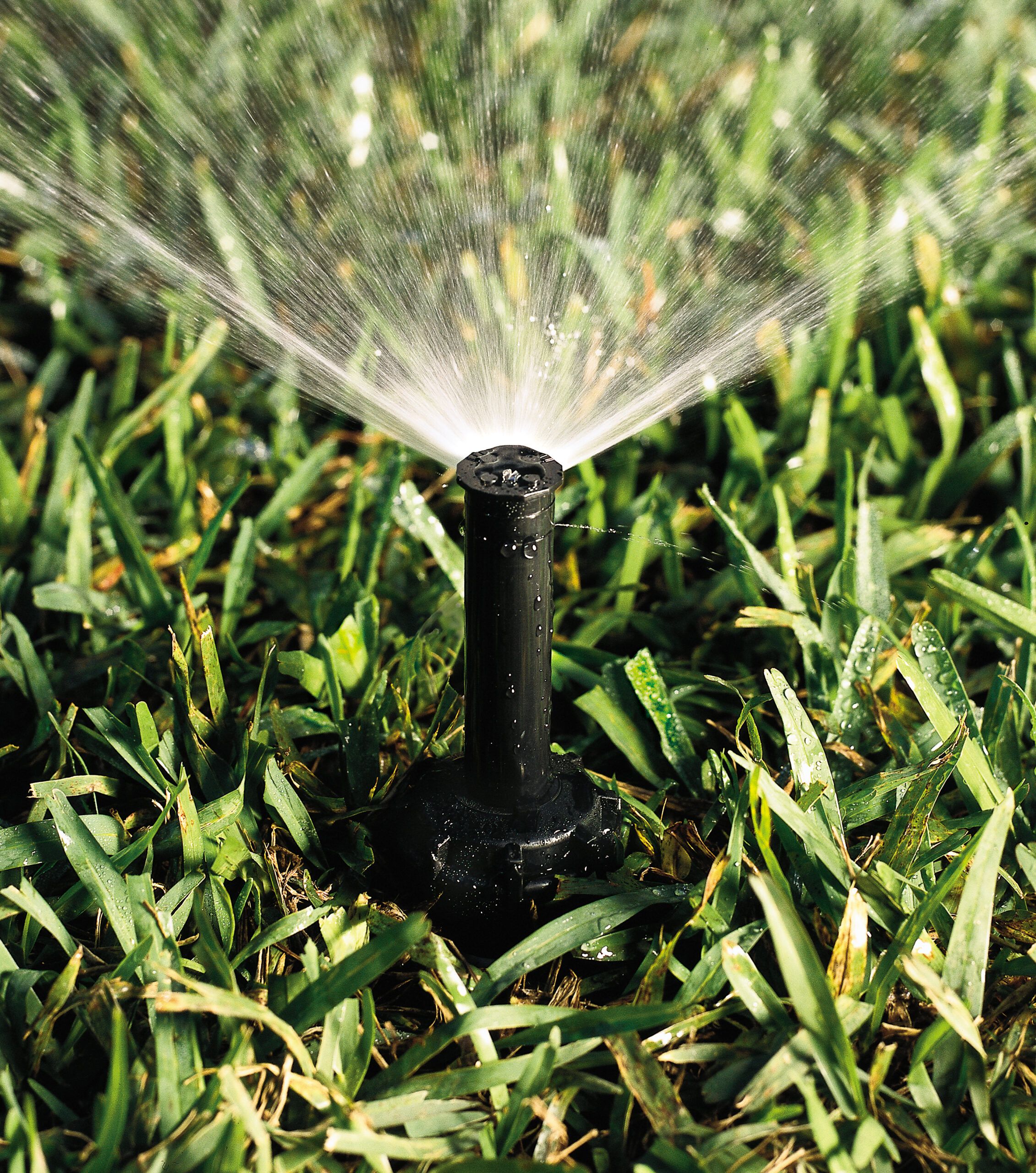Sprinkler systems are integral components of modern landscaping, providing efficient and automated irrigation for lawns, gardens, and agricultural fields. These systems offer a strategic and water-conscious approach to maintaining green spaces, ensuring optimal growth and vitality for plants.
Sprinklers can be used in a variety of fields, gardens, and landscaping projects since they can cover areas ranging from tiny to vast. Because the sprinklers come in a variety of discharge capacities, they may be used on almost any kind of irrigable soil. This makes them versatile. However, sediments or rain can cause Sprinkler Systems to clog quickly, and big Systems require huge capital investments.
In this exploration, we delve into the world of sprinkler systems, examining their types, components, installation, and the significant role they play in sustainable water management.
Sprinkler System Types
Sprinkler systems are essential tools for maintaining lush, green landscapes and ensuring the health of plants through consistent and efficient irrigation. Understanding the various types of sprinkler systems is crucial for selecting the most suitable one based on factors such as the size of the area, the type of vegetation, and water conservation goals. In this exploration, we delve into the diverse world of sprinkler systems, examining their types, functions, and ideal applications.
Fixed Sprinkler Systems
Fixed sprinkler systems are known for stationary spray heads that deliver water in a specific pattern. These are commonly used in smaller residential lawns or gardens with straightforward layouts.
The fixed nature of these systems makes them easy to install and cost-effective. They are suitable for areas where a consistent water distribution pattern is sufficient to cover the entire landscape adequately.
This kind of sprinkler irrigation system is permanent, with sprinklers, laterals, and main supply pipes, which are often made of PVC plastic, buried in the ground.
Oscillating Sprinklers
Oscillating sprinklers feature a horizontal bar with multiple openings that move back and forth, creating a fan-shaped spray pattern. These are ideal for rectangular or square-shaped lawns and gardens. The adjustable range allows users to control the width and reach of the water spray, making it versatile and user-friendly. Oscillating sprinklers are best for use in residential settings due to their simplicity and even water distribution.
Rotary Sprinklers
Rotary sprinklers have rotating arms that emit water in a circular or semi-circular pattern. These are best for larger areas, such as expansive lawns or agricultural fields. The rotation mechanism covers a broader area, and some models allow for adjustments in rotation and spray distance. This versatility makes rotary sprinklers effective for irrigating large, open spaces.
Impact Sprinklers
Impact sprinklers, also known as impulse or rotor sprinklers, use a swinging arm with a weighted sprinkler head that hits a stationary deflector.
This action creates a pulsating spray pattern, and the impact of the water stream helps distribute water over a significant distance.
Impact sprinklers are durable and effective, making them popular choices for agricultural applications where reliable and robust irrigation is essential.
Drip Irrigation Systems
Drip irrigation is a more targeted and water-efficient system that involves the precise application of water directly to the base of plants. You can achieve this through a network of tubing and emitters. Drip systems minimize water wastage by delivering water directly to the root zone, reducing evaporation and runoff. They are especially useful for gardens, flower beds, and potted plants, where water conservation is a priority.
Subsurface Irrigation
Subsurface irrigation takes a different approach by delivering water below the soil surface, directly to the root zone. This method minimizes water loss due to evaporation and surface runoff, making it an efficient choice for large landscapes, agricultural fields, and areas facing water scarcity concerns. Subsurface systems are best to ensure water reaches the plants’ root systems where it is most needed.
Understanding the characteristics and applications of each type of sprinkler system is essential for making informed decisions about landscape irrigation. Factors such as the layout of the area, water availability, and the specific needs of the vegetation will influence the choice of sprinkler system.
Components of Sprinkler Systems
Sprinkler Heads
Sprinkler heads are the devices responsible for distributing water. The type of sprinkler head determines the pattern and range of water distribution.
Pipes and Tubing
Pipes and tubing transport water from the water source to the sprinkler heads. The material and diameter of pipes impact water pressure and system efficiency.
Valves
Valves control the flow of water within the system. Automatic valves are crucial for programmable irrigation systems, allowing for precise control over watering schedules.
Controller
The controller, or timer, is the brain of the sprinkler system. It allows users to set watering schedules, durations, and frequency. Smart controllers can be programmed and monitored remotely through mobile apps.
Backflow Preventer
A backflow preventer is essential to ensure that water from the sprinkler system does not flow back into the main water supply. This protects against contamination of the potable water source.
Pressure Regulator
Pressure regulators maintain consistent water pressure within the system. This is crucial for ensuring that all sprinkler heads operate efficiently and uniformly.
Filters
Filters prevent debris from clogging sprinkler heads and other components. Regular maintenance of filters is essential to system longevity and optimal performance.
Installation and Maintenance
Design and Planning
Proper design and planning are critical for the success of a sprinkler system. You should consider factors such as water pressure, soil type, plant water requirements, and the layout of the landscape.
Excavation and Installation
Excavation involves digging trenches for pipes and tubing. Sprinkler heads are strategically placed based on the landscape design. Careful installation ensures proper coverage and water distribution.
Controller Programming
Programming the controller involves setting watering schedules, durations, and frequency. Smart controllers offer additional features, such as weather-based adjustments, contributing to water conservation.
Regular Maintenance
Regular maintenance is crucial for the longevity and efficiency of the system. This includes checking for leaks, cleaning filters, inspecting sprinkler heads, and ensuring all components are in working order.
Seasonal Adjustments
Seasonal adjustments to the watering schedule are essential to account for changes in weather conditions. Adjusting watering frequency and duration based on the season helps optimize water use and plant health.
What are the Advantages of Sprinkler System?
Water Conservation
Sprinkler systems, when properly designed and maintained, contribute to water conservation by delivering water directly to plants’ root zones. This targeted approach minimizes water wastage through evaporation and runoff.
Energy Savings
Efficient sprinkler systems, particularly those with smart controllers, contribute to energy savings by optimizing water use. Smart controllers can adjust watering schedules based on real-time weather conditions, reducing the need for unnecessary irrigation.
Plant Health and Aesthetics
Well-maintained sprinkler systems promote plant health by providing consistent and adequate water. This contributes to vibrant and lush landscapes, enhancing the overall aesthetics of residential and commercial properties.
Time Savings
Automated sprinkler systems save time for property owners and landscapers. Programmable controllers eliminate the need for manual watering, allowing users to set schedules that align with optimal watering times.
Property Value
A well-designed and properly functioning sprinkler system can increase the value of a property. Lush and well-maintained landscapes contribute to curb appeal, attracting potential buyers or tenants.
Challenges and Considerations
While sprinkler systems offer numerous benefits, it’s important to be mindful of potential challenges and considerations:
Overwatering
Improper programming or system malfunctions can lead to overwatering, potentially causing waterlogged soil and root rot.
System Design Flaws
Inadequate design can result in uneven water distribution, leaving some areas of the landscape overwatered while others remain dry.
Maintenance Neglect
Neglecting regular maintenance can lead to clogged sprinkler heads, leaks, and other issues that compromise the system’s efficiency.
Watering Restrictions
Depending on location, there may be water restrictions that limit the times and days when sprinkler systems can be operated.
Sprinkler Systems – FAQs
How do smart sprinkler controllers contribute to water conservation?
Smart controllers optimize water use by adjusting watering schedules based on real-time weather conditions, reducing unnecessary irrigation, and promoting water conservation.
What are the key components of a sprinkler system, and how do they function?
Key components include sprinkler heads, pipes, valves, controllers, backflow preventers, pressure regulators, and filters. Each plays a crucial role in the efficient distribution of water.
What challenges should be considered when installing a sprinkler system?
Challenges include the risk of overwatering, potential flaws in system design, neglecting maintenance, and adherence to watering restrictions based on location.
How do subsurface irrigation systems differ from traditional sprinkler systems?
Subsurface irrigation delivers water below the soil surface directly to the root zone, minimizing water loss due to evaporation and runoff. This method is particularly effective for large landscapes and agricultural fields.
What is sprinkler system example?
A sprinkler system is made up of pipes running along the ceiling that are pressurized with water and have a backup water supply to ensure a steady flow. Automatic sprinklers are installed in specific areas and are connected to the pipes.
Conclusion
Sprinkler systems stand as technological marvels in the realm of landscaping and agriculture, offering precise and efficient irrigation solutions. From residential lawns to vast agricultural fields, these systems play a pivotal role in sustaining green spaces while promoting water conservation.
As technology continues to advance, smart irrigation systems are poised to become more prevalent, providing users with greater control, automation, and environmental sensitivity. With proper installation, maintenance, and consideration of water management principles, sprinkler systems will continue to be indispensable tools for nurturing landscapes with precision and care.



One reply on “Sprinkler Systems – Precision Irrigation for Modern Landscaping”
I find it fascinating how you could use sprinkler systems to provide enough water for your plants. I have a friend who wants to try investing in a garden that can transform the appearance of his exterior. I should share this with him so we can find a sprinkler repair and installation expert for his garden.